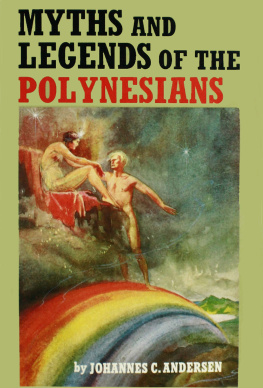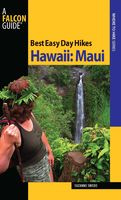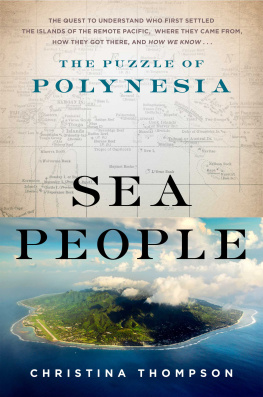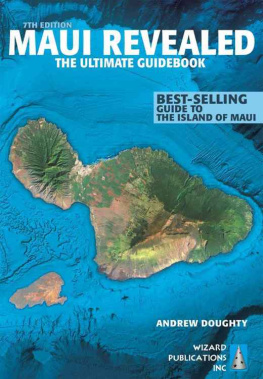AUTHORITIES
BEST, ELSDON: The Maori (2 vols., Wellington, 1924).
Maori Religion and Mythology, Part I (Dominion Museum Bulletin No. 10, Wellington, 1924).
CHURCHILL, W.: The Polynesian Wanderings (Washington, 1911).
Sissano : Movements of Migration within and through Melanesia (Washington, 1916).
COOK, A. B.: Zeus: a Study in Ancient Religion (Cambridge, 1914; vols, i and ii only issued).
COOK, CAPTAIN JAMES: A Voyage to the Pacific Ocean (London, 1784).
ELLIS, WILLIAM: Polynesian Researches (2 vols., London, 1829; 4 vols., 1831).
EMERSON, N. B.: Unwritten Literature of Hawaii (Smithsonian Institution, Bureau of American Ethnology Bulletin No. 38, Washington, 1909).
FENTON, F. D.: Suggestions for a History of the Maori People (Auckland, 1885).
FORNANDER, A.: An Account of the Polynesian Race (3 vols., London, 1880).
Fornander Collection of Hawaiian Antiquities (Honolulu, 1916-17).
FRAZER, SIR JAMES G.: The Belief in Immortality and the Worship of the Dead (vol. ii, The Belief among the Polynesians; London, 1922).
GILL, WILLIAM W.: Myths and Songs from the South Pacific (London, 1876).
GREY, SIR GEORGE: Polynesian Mythology (London, 1855; 2nd edition, with Maori originals, Auckland, 1885).
HANDY, E. S. CRAICHILL : Polynesian Religion (Bernice P. Bishop Museum Bulletin No. 34, Honolulu, 1927). (Note. This book is an excellent resume of the subject)
KALAKAUA I, King of the Hawaiian Islands: The Legends and Myths of Hawaii (New York, 1888).
KER, A.: Papuan Fairy Tales (London, 1910).
KRAEMER, A.: Die Samoa-Inseln (2 vols., Stuttgart, 1920).
MOERENHOUT, J. A.: Voyages aux ties du grand ocian, (2 vols., Paris, 1837).
RIVERS, W. H. R.: The History of Melanesian Society (2 vols., Cambridge, 1914).
SMITH, S. PERCY: Hateaiki: the Original Home of the Maori (4th edition, Wellington, 1921). (Smith's Lore of the Whare-wananga appeared first in the Journal of the Polynesian Society, and was issued by the Society as Memoirs 3 and 4 in 1913 and 1915.)
STAIR, J. B.: Old Samoa (London, 1897).
STUEBEL, O.: Samoaiscke Texte (Berlin, 1896).
THRUM, THOMAS G.: Hawaiian Folk-tales (Chicago, 1907).
TRECEAR, EDWARD: The Comparative Maori Dictionary (Wellington, 189:).
TURNER, GEORCI: Nineteen Tears in Polynesia (London, 1861).
Samoa (London, 1884).
WATSON, R. M.: History of Samoa (Wellington, 1918).
WESTERVELT W. D.: Legends of Ma-ui, a Demigod of Polynesia, and of his Mother Hina (Melbourne, 1913).
WHITE, JOHN: The Ancient History of the Maori (6 vols., Wellington, 1887).
WILLIAMS, T.: Fiji and the Fijians (2 vols., London, 1858).
WILLIAMSON, R. W.: The Social and Political Systems of Central Polynesia (3 vols., Cambridge, 1924).
Bulletin de la socilti des itudes ocianiennes (Papeete, 1917-23).
Journal of the Polynesian Society (Wellington and New Plymouth, 1892, and yearly).
Transactions of the New Zealand Institute (Wellington, 1869, and yearly).

CHAPTER I: POLYNESIA AND ITS PEOPLE
E ARLY voyagers were surprised to find, scattered over the islands of the Pacific Ocean, a race that appeared homogeneous in physical characteristics, language, customs, and religion, and all observing the powerful institution of the tapu. They occupied a definite part of the great ocean, extending from Hawaii in the north to New Zealand in the south, a distance of 3200 miles, and from the Ellice Islands in the north-west to Easter Island in the south-east, a distance of 4000 milesor, roughly, from 25 north latitude to 45 south, and from longitude 170 east of Greenwich to 110 west, or, say, an area of 3500 miles by 4000that is, 14,000,000 square miles.
The area occupied has been called Polynesia, and roughly it lies east of a line drawn from New Zealand through the Friendly Islands to Samoa, thence north-east to Hawaii, all the islands mentioned being included. Within this area there are a few islands occupied by non-Polynesians, the principal groups and islands occupied by Polynesians being as follows: the Hawaiian Islands (6500 sq. m.), Samoa (1200 sq. m.), the Friendly or Tongan Islands (390 sq. m.), Rotuma (20 sq. m.), Niue (100 sq. m.), the Cook Islands, including the Hervey Islands and Rarotonga (120 sq. m.), the Austral Islands (75 sq. m.), the Society or Tahitian Islands (650 sq. m.), the Low Archipelago, or Tuamotu group (formerly Poumotu, mispronounced Paumotu) (30 sq. m.), the Marquesas (480 sq. m.). The Ellice Islands (30 sq. m.) lie 400-500 miles north-west of Samoa, and outside the western boundary of Polynesia as defined above; but with this exception, and the exception of a few scattered places in the New Hebrides, the Loyalty Islands, and the north-east and south-east coasts of New Guinea, the Polynesian is not found unmixed west of the line described.
The other great divisions according to racial characteristics are Indonesia, including the East Indian islands, Sumatra, Borneo, Java, the Philippines, Celebes, and the Moluccas, etc.; Melanesia, including Australia, New Guinea, and the string of islands running south-east from the latterthe Bismarck Archipelago, the Solomon Islands, Banks Islands, the New Hebrides, New Caledonia, and Fiji; and Micronesia, including the small islands in the scattered groups north-east of Indonesia and Melanesiathe Mariannes, the Caroline Islands, the Marshall Islands, and the Gilbert Islands. While the Polynesians once occupied the Indonesian islands and the Micronesian, their occupation was rather that of sojourners than settlers, and they do not now live among the Indonesians and Micronesians, nor do they mix with them.
As a race the Polynesians are somewhat above middle height, 5 feet 9 inches or 5 feet 10 inches, usually well formed, with well-developed limbs and muscles. The women, however, are inclined to be short and stout, and over-developed as regards the lower limbs. In colour they vary from a light to a dusky brown, the lighter shades being found nearer the equator, the darkest being at the two extremes, Hawaii in the north and New Zealand in the south. The children when born are as fair as Europeans, but darken on exposure. In Tahiti a fair skin was esteemed, and women, and men too, would live as much in the shade as possible in order to retain the fairness. Their hair is thick and strong and black, with a slight tendency to curl or wave. The beard is scanty, and does not appear till toward middle life. The hair under the arms and on the breast was often eradicated for cleanliness' sake. In many of the islands there is, or was, a great difference between what are commonly called the upper and lower classes, the former being much superior in size and build, often showing strains of men over 6 feet in height, and of fine physical development. The lower classes were also darker in hue.
In character they showed the general gaiety of a happy disposition and good humour, with a desire to please and a willingness to be amused. They were, however, fickle in their passions and their desires. They showed great susceptibility to new impressions, and a readiness to adopt new customs and modes of thinking, and their intellectual endowments were good. Their domestic affections were weak, they were fond of war, and, while not deliberately cruel, were callous to the sufferings of others. They were licentious, extremely so in some of the islands, and showed a general lack of conscientiousness. They were incapable of keeping a secret, so that in warfare each side usually knew what the other intended. It was his secretive nature that made Te Rauparaha such a remarkable Maori warrior; no man knew his thought. They had strong religious feelings, which could not be called fear or superstition since many had no images or idols, and those who had used them as symbols only, as Christians use the Cross. It was this religious feeling that gave the system of tapu so firm a hold, and there is no doubt that tapu effectively took the place of conscience and civil law, and was more implicitly obeyed.









